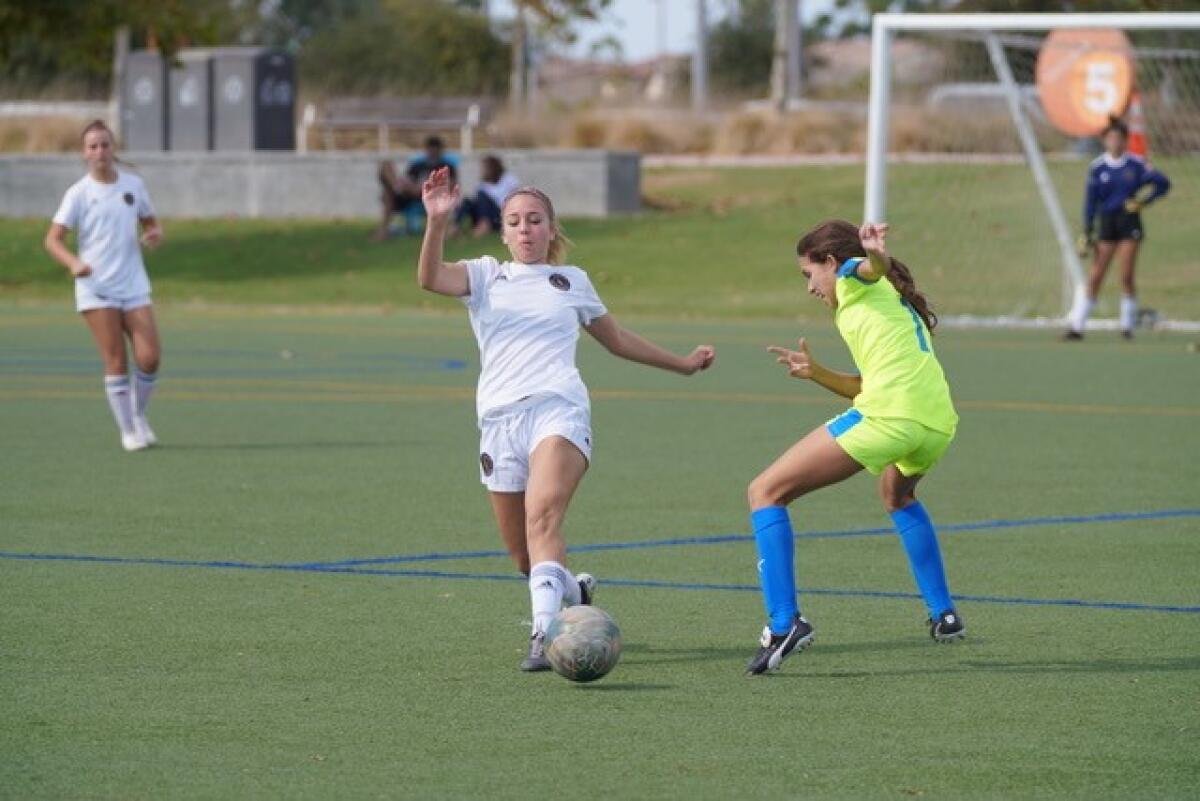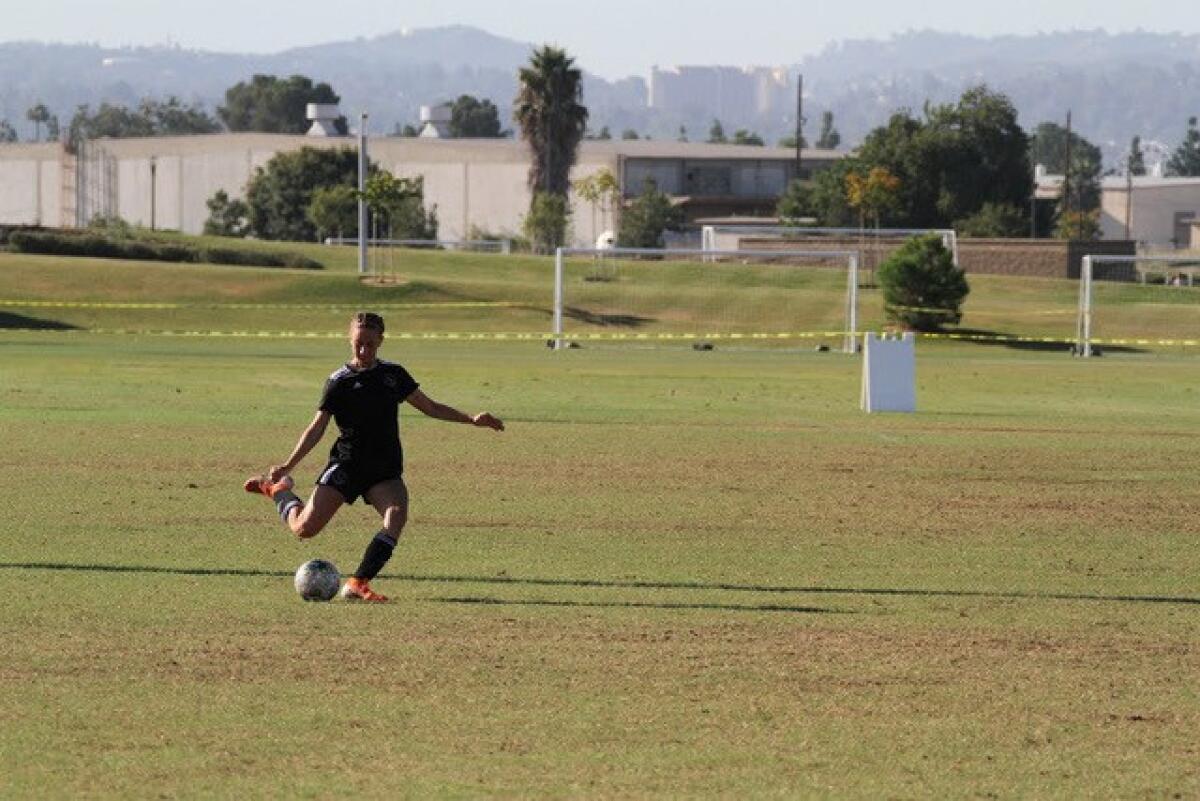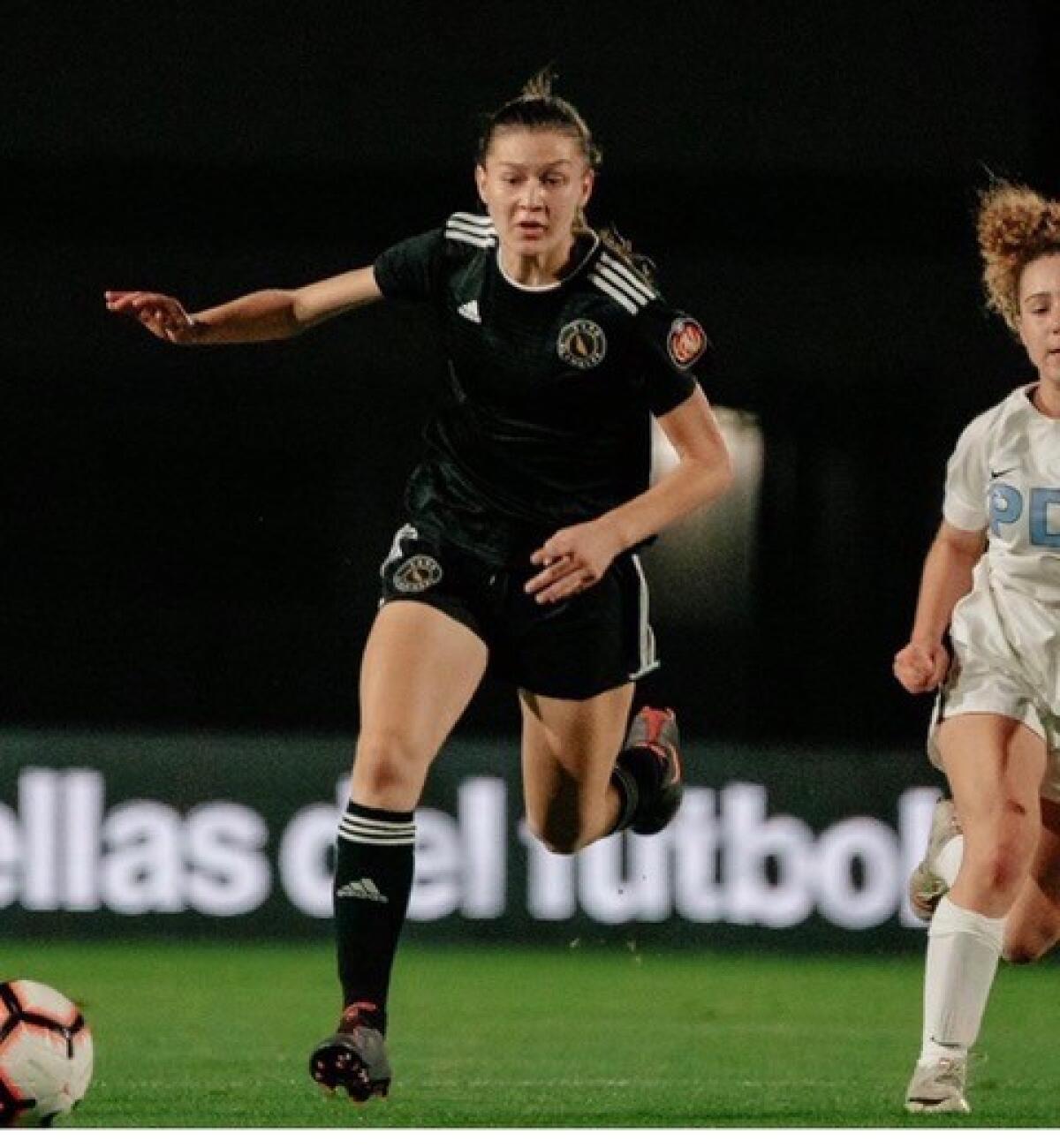ECNL clubs partake in nationwide COVID-19 study assessing risk of soccer participation

When the coronavirus pandemic arrived and put the sports world in a state of suspension in March, it caused drastic changes.
Among those impacted were youth athletes, accustomed to the ever-present activity and interaction associated with their sport.
Earlier this year, the University of Wisconsin conducted a nationwide study of youth athletes that found a significant portion of those surveyed were adversely affected by school closures and the loss of sports. Forty percent reported symptoms of moderate to severe depression, while 37% said they experienced symptoms of moderate to severe anxiety.
Dr. Drew Watson, a sports medicine physician and researcher at the University of Wisconsin, was then compelled to run a study to gather preliminary data regarding the risk of transmission in specific sports. As the chief medical advisor of the Elite Clubs National League, a youth soccer organization, Watson was able to start there.
“We recognized pretty early on that the isolation that is associated with restriction from school and sports has a really profound impact, particularly on adolescents and adolescent athletes, specifically,” Watson said.
The survey asked member club leadership how many players had returned to soccer participation, when they had done so, how many cases of COVID-19 they had, and whether those cases could be traced to transmission by soccer, Watson said. It also asked clubs to describe what risk-reduction protocols they were implementing individually.
A total of 124 clubs across 34 states from the ECNL participated in the study, the sample size representing more than 90,000 players who had returned to training sessions, and in some cases games, for an average of 10 weeks.

“If you look at the case rate across the country from the data that the American Academy of Pediatrics put out for the 10 weeks prior to our survey, we kind of compared that case rate to ours, and what we found was that in ours that the case rate within our study sample was 310 cases of COVID-19 per 100,000 athletes.
“That’s not in it of itself an easily interpretable number, but the case rate from the American Academy of Pediatrics for that 10 weeks across the country was 477 cases per 100,000 kids, so it’s not directly apples to apples to compare those, but the takeaway for me is that it doesn’t seem like participating in soccer within the context that most of these clubs are doing it incurs an increased risk of contracting the virus.”
Watson wants to replicate the study across other sports, and he stressed that the new information is not a green light to do anything, especially given that safety protocols were in place.
“I think there is information that restricting young athletes from school and sports has pretty profound negative impacts on their physical and mental health, but that doesn’t necessarily mean that in all contexts, we should be returning to activities,” Watson said. “It means that we should be incorporating that into a discussion that hopefully also has information about the risks that is associated with participation with respect to COVID-19.”
ECNL President Christian Lavers said that clubs were eager to participate in the study to help provide a “wide swath of potential data” for decision-makers regarding the return of youth athletics.
“I think nobody cares more about kids’ well-being than parents,” Lavers said, adding that every ECNL club in the study reported having risk-reduction plans in place to guard against the virus. “I think that needs to be remembered in this perspective, as well, that parents ultimately are going to have their kids’ health and safety as the number one priority.”
California has been one of the more restrictive states for youth athletics. The California Department of Public Health introduced guidelines for youth sports on Aug. 3.
Cheyne Gordon, who coaches U15, U16 and U18 girls’ teams for Slammers FC, a club that trains out of Newport Beach and Irvine, said that the club recently began including goalkeepers in training sessions.

“What we’ve been able to do is literally skills and drills, so pretty much individual training, passing and shooting,” said Gordon, who is also an associate head coach of women’s soccer for Concordia University. “We’ve only recently incorporated goalkeepers, and we were very conservative in adding that in.”
The Orange County Health Care Agency reported four deaths and 140 new infections of COVID-19, the disease caused by the virus, in its latest numbers released on Thursday.
Overall, the county has had 1,115 lives lost due to the virus and 51,399 cumulative cases.
There are currently 198 patients hospitalized countywide because of the virus, with 64 of those patients being treated in intensive care units.
An additional 9,601 tests were reported in the last day, bringing the total number of tests performed in the county to 765,382. The healthcare agency approximates the total number of recoveries in the county from fighting the virus to be 46,153.
Orange County is in the second red tier with key metrics remaining firm. The county is averaging 4.7 new daily cases per 100,000 residents and has a testing positivity rate of 3.9%.
County health officials are asking residents to be mindful of the coming flu season, stressing that residents should get flu shots in addition to following best practices like social distancing, hand washing and good hygiene encouraged to fight the spread of the coronavirus.
“Cooler weather is coming, and we know that when people spend more time indoors and have closer contact with each other, germs spread much more quickly,” Dr. Clayton Chau, director of the Orange County Health Care Agency, said in a release on Thursday. “It is critical that everyone over 6 months old get a flu shot to decrease the incidence of influenza in the community and to ease the stress on the healthcare system when both viruses are likely to be circulating.”
Here are the latest cumulative coronavirus case counts and COVID-19 deaths for select cities in Orange County:
- Santa Ana: 9,885 cases; 260 deaths
- Anaheim: 8,778 cases; 241 deaths
- Huntington Beach: 2,320 cases; 70 deaths
- Costa Mesa: 1,771 cases; 28 deaths
- Irvine: 1,574 cases; 12 deaths
- Newport Beach: 1,101 cases; 21 deaths
- Fountain Valley: 493 cases; 15 deaths
- Laguna Beach: 202 cases; fewer than five deaths
Here are the case counts by age group, followed by deaths:
- 0 to 17: 3,555 cases; one death
- 18 to 24: 7,722 cases; four deaths
- 25 to 34: 11,143 cases; 17 deaths
- 35 to 44: 8,233 cases; 30 deaths
- 45 to 54: 8,296 cases; 96 deaths
- 55 to 64: 6,189 cases; 158 deaths
- 65 to 74: 3,064 cases; 226 deaths
- 75 to 84: 1,756 cases; 239 deaths
- 85 and older: 1,394 cases; 344 deaths
Updated figures are posted daily at occovid19.ochealthinfo.com/coronavirus-in-oc. For information on getting tested, visit occovid19.ochealthinfo.com/covid-19-testing.
Support our sports coverage by becoming a digital subscriber.
For more sports stories, visit latimes.com/socal/daily-pilot/sports or follow us on Twitter @DailyPilotSport.
All the latest on Orange County from Orange County.
Get our free TimesOC newsletter.
You may occasionally receive promotional content from the Daily Pilot.




